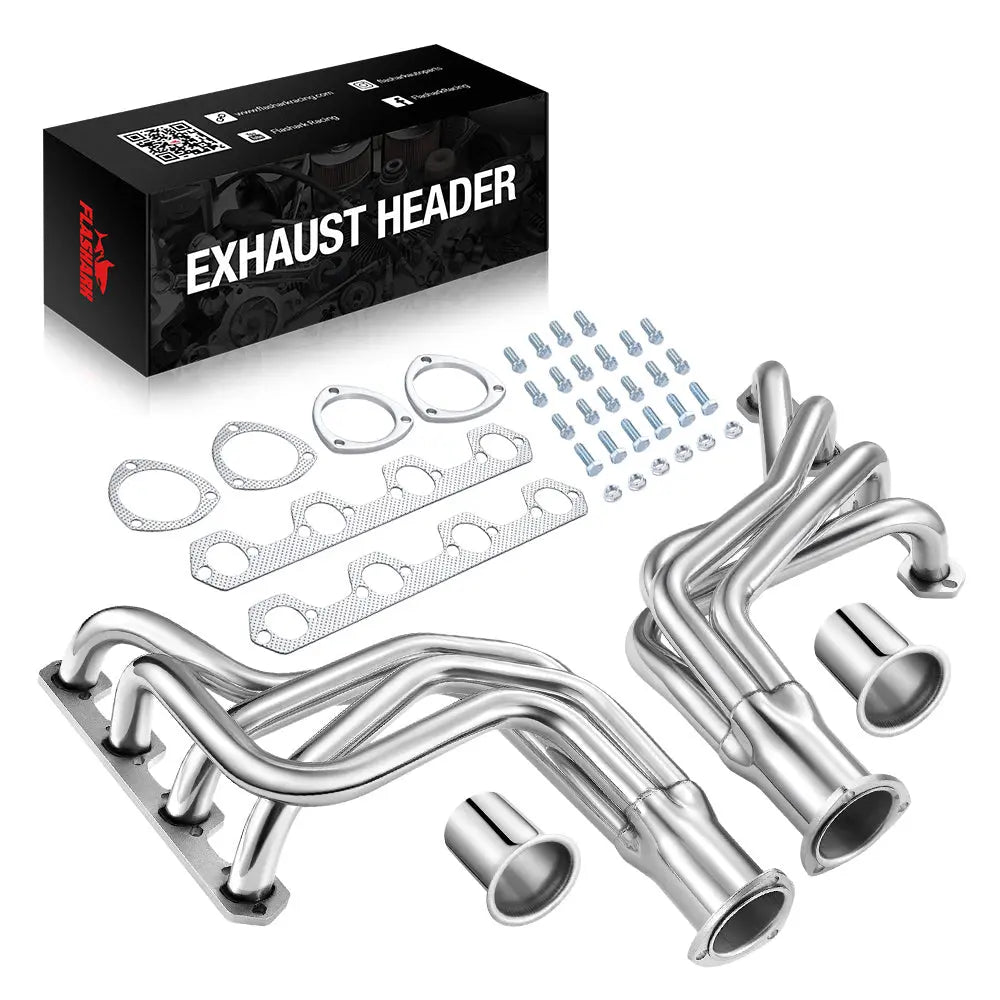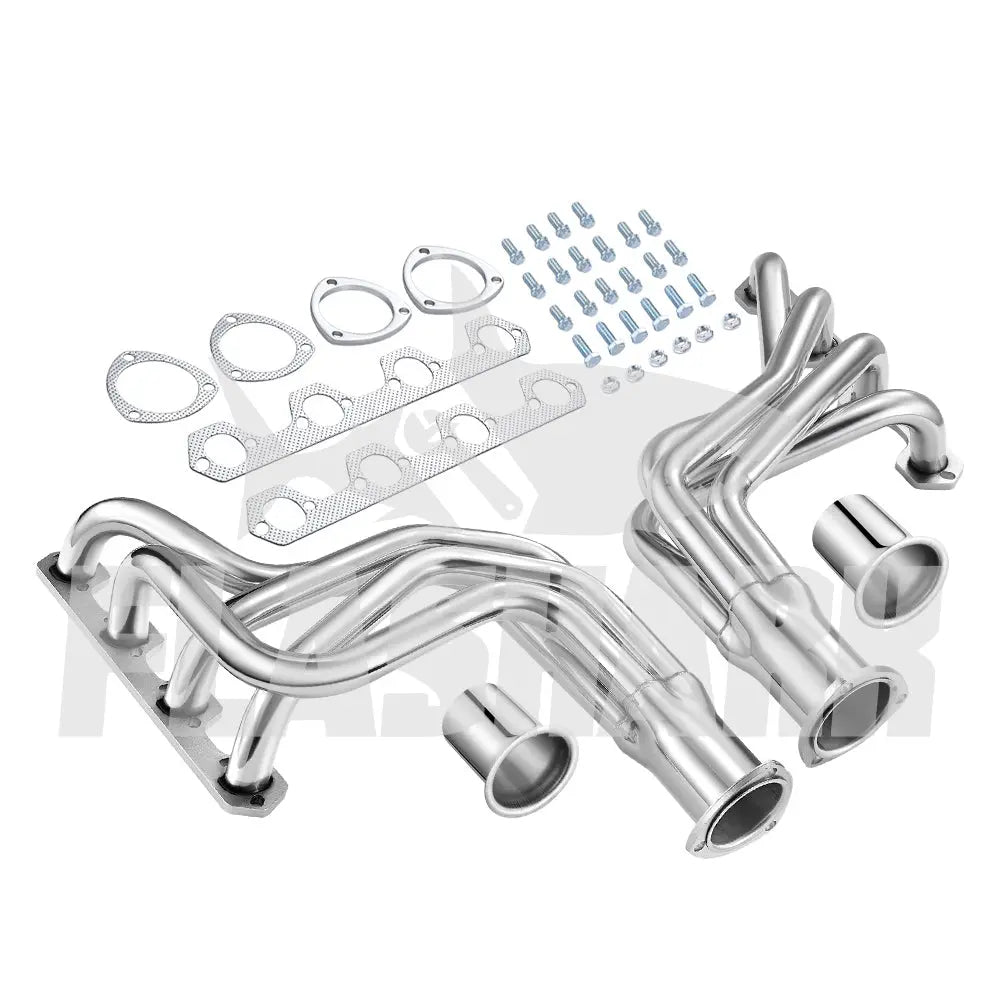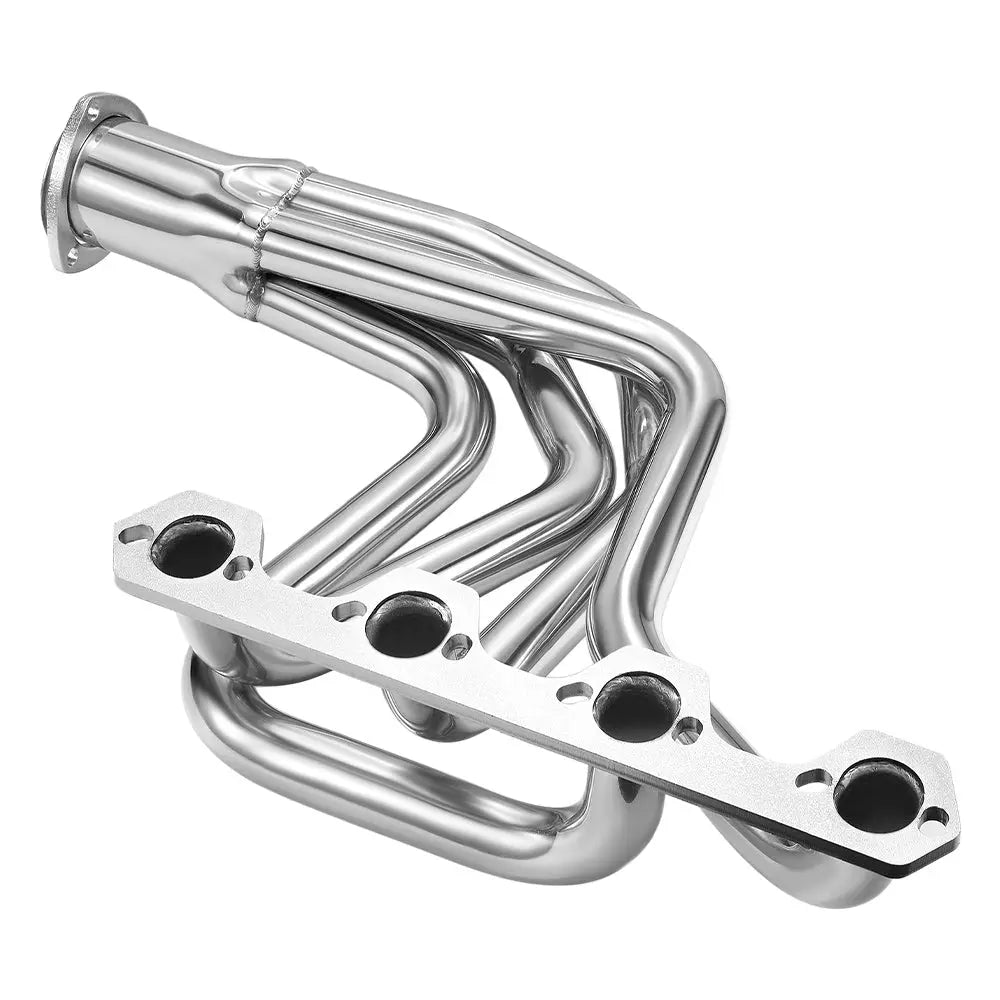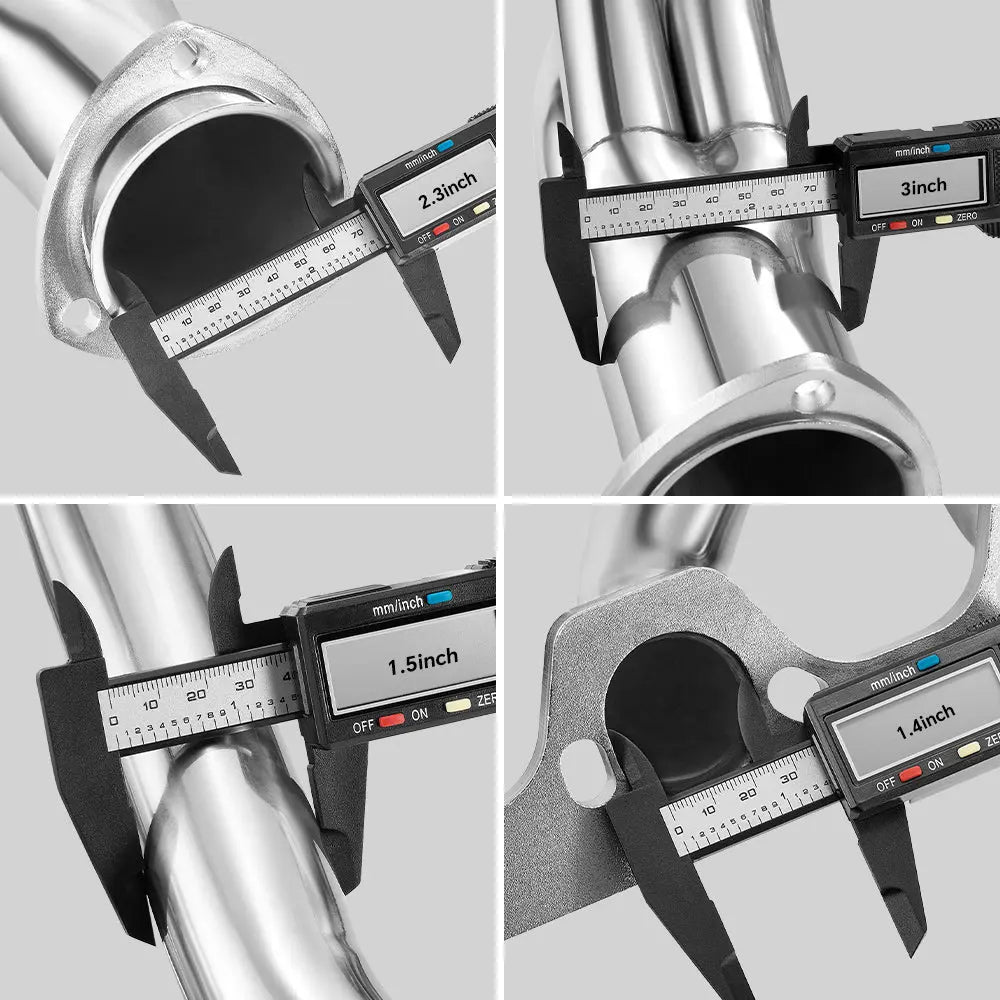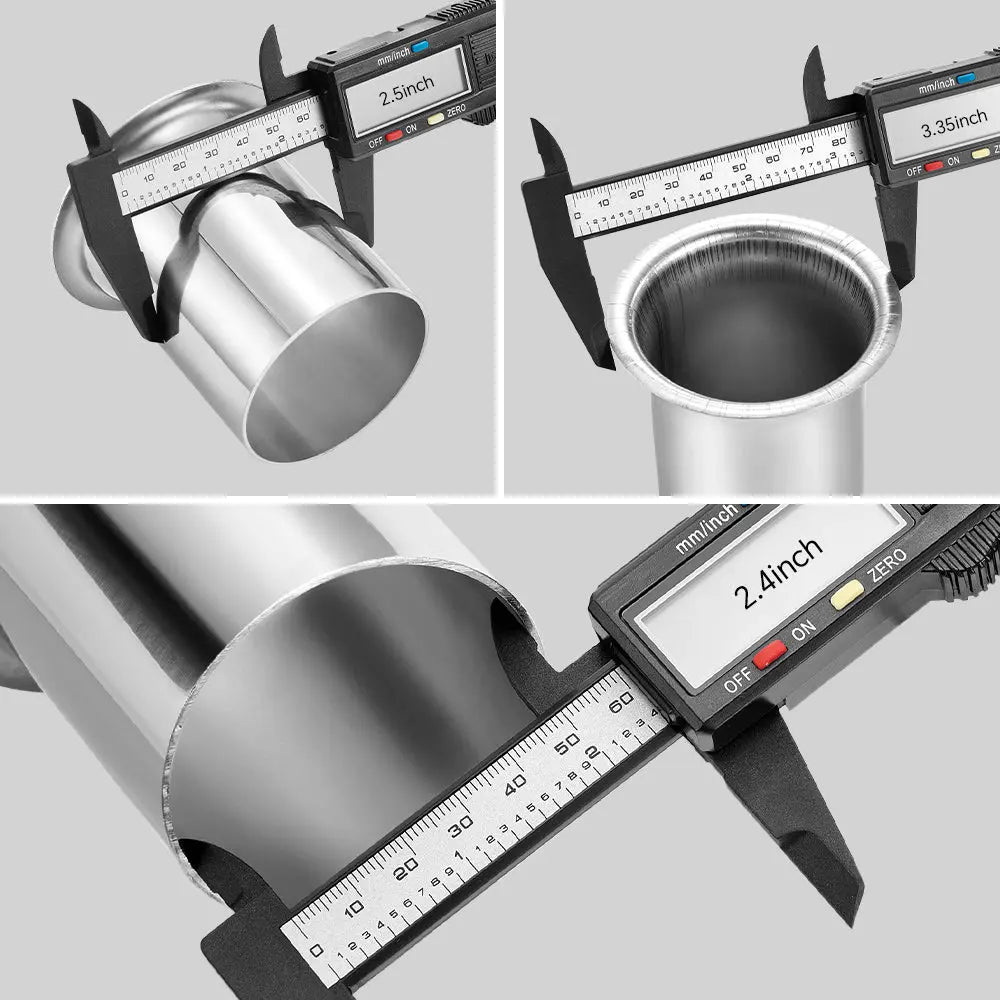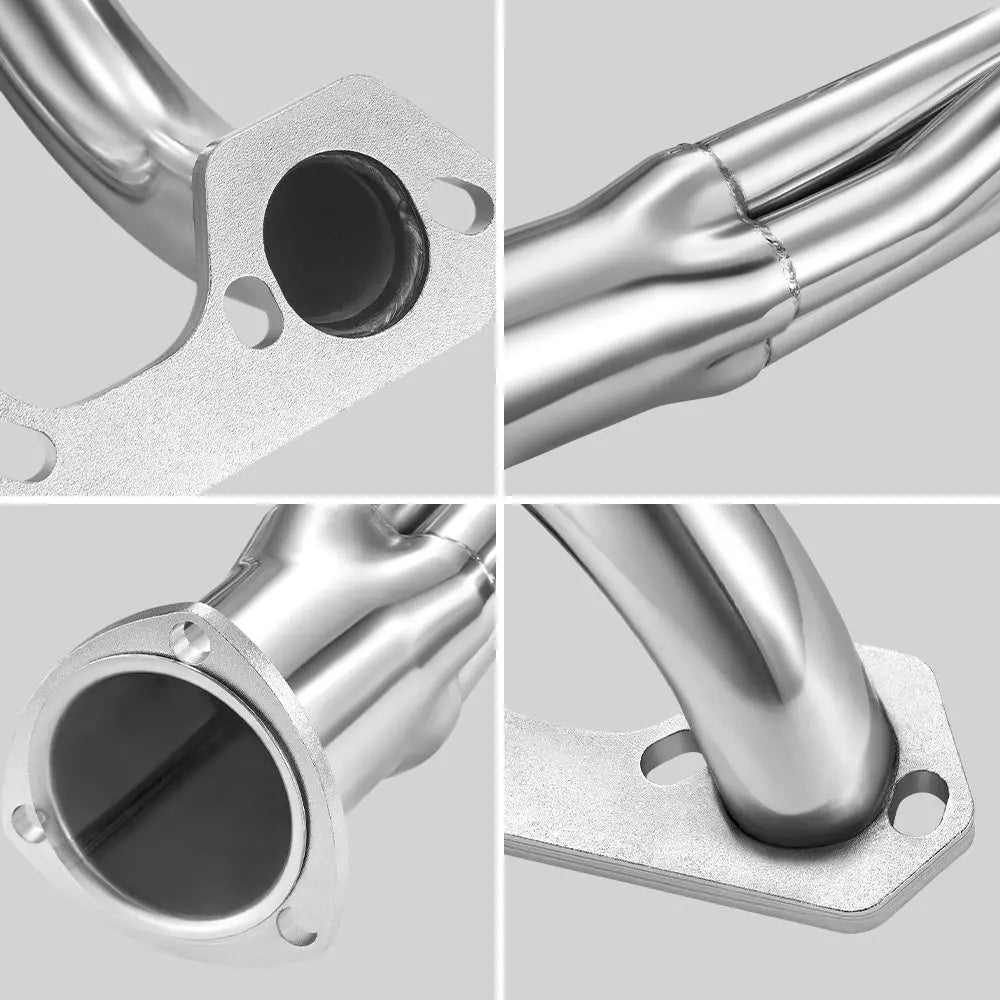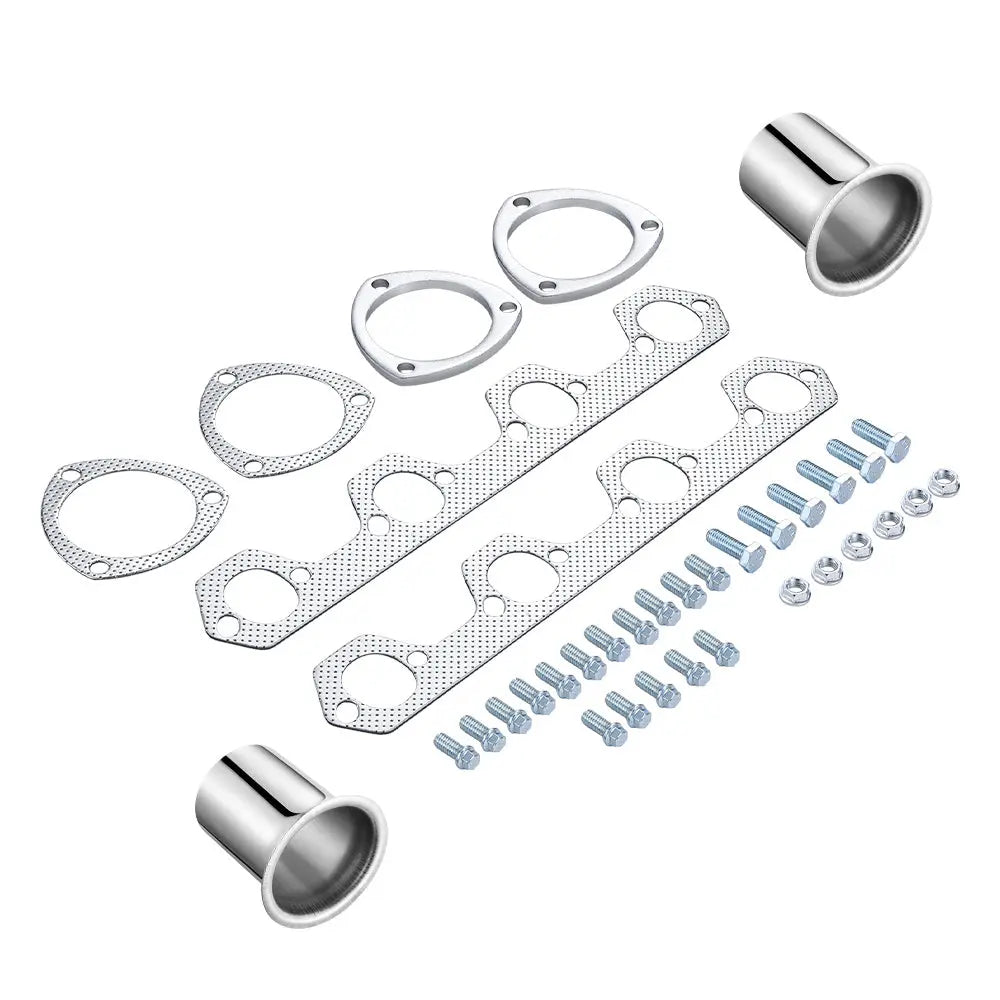Our products are designed based on OEM specifications and are suitable for unmodified vehicles. If your vehicle has been modified, compatibility or installation cannot be guaranteed. We recommend confirming your vehicle's setup or consulting our customer service team before purchase. We're here to help!
Description
Flashark Long Tube Exhaust Headers for 1969-1979 Ford F100 5.0L 302W
Upgrading your long tube exhaust headers is essential for improving engine performance and sound. Ford 302 exhaust headers increase airflow, adding 10-15 HP/TQ instantly. Whether on the street or track, these headers boost horsepower and enhance exhaust tone. Flashark offers many products to help you create your own custom engine headers. It's really easy and convenient to use: direct bolt-on, no modification needed.
Fitment:
- 1969-1979 Ford F100 5.0L 302W
Specifications:
Brand Name: Flashark
Certificate: ISO9001:2000
Application: Automobile Exhaust Header
Material: Stainless Steel+Black Paint
Surface: Mirror Polish
Tube Diameter: 1.50"
Collector Size: 3.00"
Details:
- Tube Diameter: 1.50"
- Collector Size: 3.00"
- Primary Tube Gauge: 18-gauge
- Flange Thickness (in.): 0.31 in.
- Number of O2 Sensor Locations: 0
- The header features an 8-2 piping design
- 100% brand new, Never been tried or installed
- Long Tube Headers, Flange Connections
- TIG Weld & Black Coated For Durability
- Enhance Sound, Horsepower & Torque for Ford 302 Engines
- Mandrel-Bent For Maximum Performance in Ford 302 Engines
- Product Includes: Two Exhaust Headers with Gaskets and bolts


Why Upgrade to Ford 302 Headers Instead of Stock Exhaust Manifolds?
Factory exhaust manifolds on the Ford 302W were built for durability and cost efficiency, not performance. While they work adequately, they significantly limit airflow, creating backpressure that reduces usable power.
Upgrading to Ford 302 headers unlocks the engine’s potential:
- Reduces exhaust restriction for better airflow
- Improves throttle response and overall drivability
- Increases low- and mid-range torque, perfect for trucks
- Produces a deeper, more aggressive V8 exhaust tone
For owners seeking meaningful performance gains, Ford 302 headers remain one of the most effective bolt-on upgrades available.
Shorty vs. Long Tube Headers for Ford 5.0L 302W
When choosing headers for a Ford 302W, the decision often comes down to shorty headers versus long tube headers.
Shorty headers are compact and easy to install, but their shorter runner length limits performance gains and keeps them closer to stock-level output.
Ford 302 long tube headers are designed for performance-focused builds. The extended runner design improves exhaust flow and scavenging, delivering increased horsepower, stronger torque, and a deeper V8 exhaust sound across a wider RPM range. If performance and sound matter, long tube headers are the clear choice for the Ford 302 platform.

Why Choose Flashark Ford 302 Long Tube Headers?
Flashark Ford 302 long tube headers deliver real performance gains without premium brand prices. Built specifically for the 302W, they improve horsepower, torque, and exhaust sound while offering durable stainless steel construction and long-lasting reliability.
A proven upgrade with solid build quality and excellent value, these headers are the smart choice for classic Ford truck owners.

Ford 302W Engine Overview
The Ford 302 Windsor (5.0L) is one of Ford’s most legendary small-block V8 engines. Known for its compact design, durability, and strong torque characteristics, the 302W powered countless Ford trucks and performance vehicles throughout the late 1960s and 1970s.
Thanks to its simple architecture and massive aftermarket support, the 302W responds exceptionally well to airflow upgrades. Improving exhaust efficiency with high-quality Ford 302 exhaust headers is one of the most effective ways to enhance engine output, responsiveness, and driving enjoyment.

